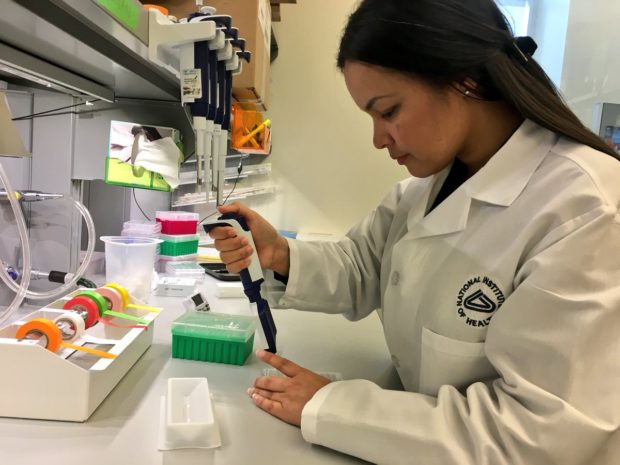Scientists Discover How the Brain Turns Pain Up or Down
Pain perception is essential for survival, but how much something hurts can sometimes be amplified or suppressed: for example, soldiers who sustain an injury in battle often recall not feeling anything at the time.
A new study published in Cell Reports on Tuesday honed in on the brain circuitry responsible for upgrading or downgrading these pain signals, likening the mechanism to how a home thermostat controls room temperature.
Scientists shed light on how brains turn pain up or down https://t.co/QlUWgzH8QC via @ATembelea #CSSingleCellPower @CellReports @YarCarLab @CellSymposia @tdw1373 @HanaScientist @UCSF @QuinceyJustman @CellSystemsCP @sfmatheson @Leishk1
— AfricaTembelea (@AfricaTembelea) October 16, 2019
Yarimar Carrasquillo, the paper’s senior author and a scientist for the National Center for Complementary and Integrative Health (NCCIH), told AFP the region responsible was the central amygdala, which according to her work appeared to play a dual role.
Studying mice, Carrasquillo and her colleagues found that the activity in neurons that express protein kinase C-delta amplified pain, while neurons that express somatostatin inhibited the chain of activity in the nerves required to communicate pain.
The central amygdala isn’t completely responsible for pain itself: if it were removed entirely, then “the ‘ouch’ of things, or the protective pain, would remain intact,” said Carrasquillo.
“It seems to be sitting there waiting for something to happen,” for example responding to stress or anxiety that amplifies pain, or being forced to focus on a task that diverts your attention and reduces pain.
Experiencing pain can be a vital warning to seek help, for example in a person experiencing appendicitis or a heart attack. People who are born with insensitivity to pain, meanwhile, often do not realize the severity of injuries and are at greater risk of early death.
But not all pain is useful. According to a 2012 survey, about 11 percent of US adults have pain every day and more than 17 percent have severe levels of pain.
Often this leads to dependence on potent painkillers like opioids or attempting to self-medicate through counterfeit or illicit drugs which are increasingly laced with deadly fentanyl.
Dr. Navedo (@mf_navedo) was a grad student in the lab next to where I did my undergrad research in @uprrp. Proud to see many of us making it to PIs and doing great science! 🇵🇷 Read his recent review to learn about the function of ion channels in microcirculation #CienciaBoricua https://t.co/5O1PjiZGby
— Yarimar Carrasquillo (@YarCarLab) October 13, 2019
By better understanding the brain mechanisms responsible for pain modulation, researchers hope to eventually find better cures: potentially ones that target only those forms of pain that are “bad” and not useful.
“The healthy response is you get pain, it tells you something is wrong, it heals, and the pain goes away,” said Carrasquillo. “In chronic pain, that doesn’t happen, the system gets stuck. If we can identify what makes the system gets stuck, then we can reverse it.”


